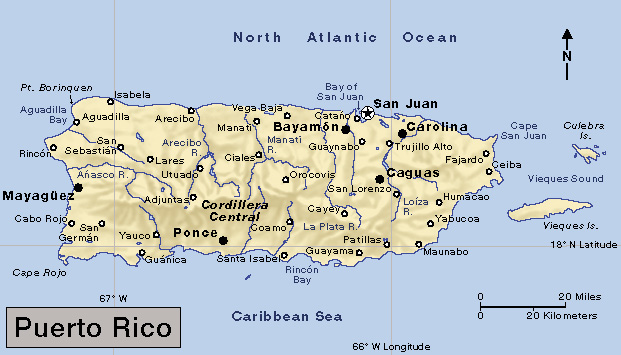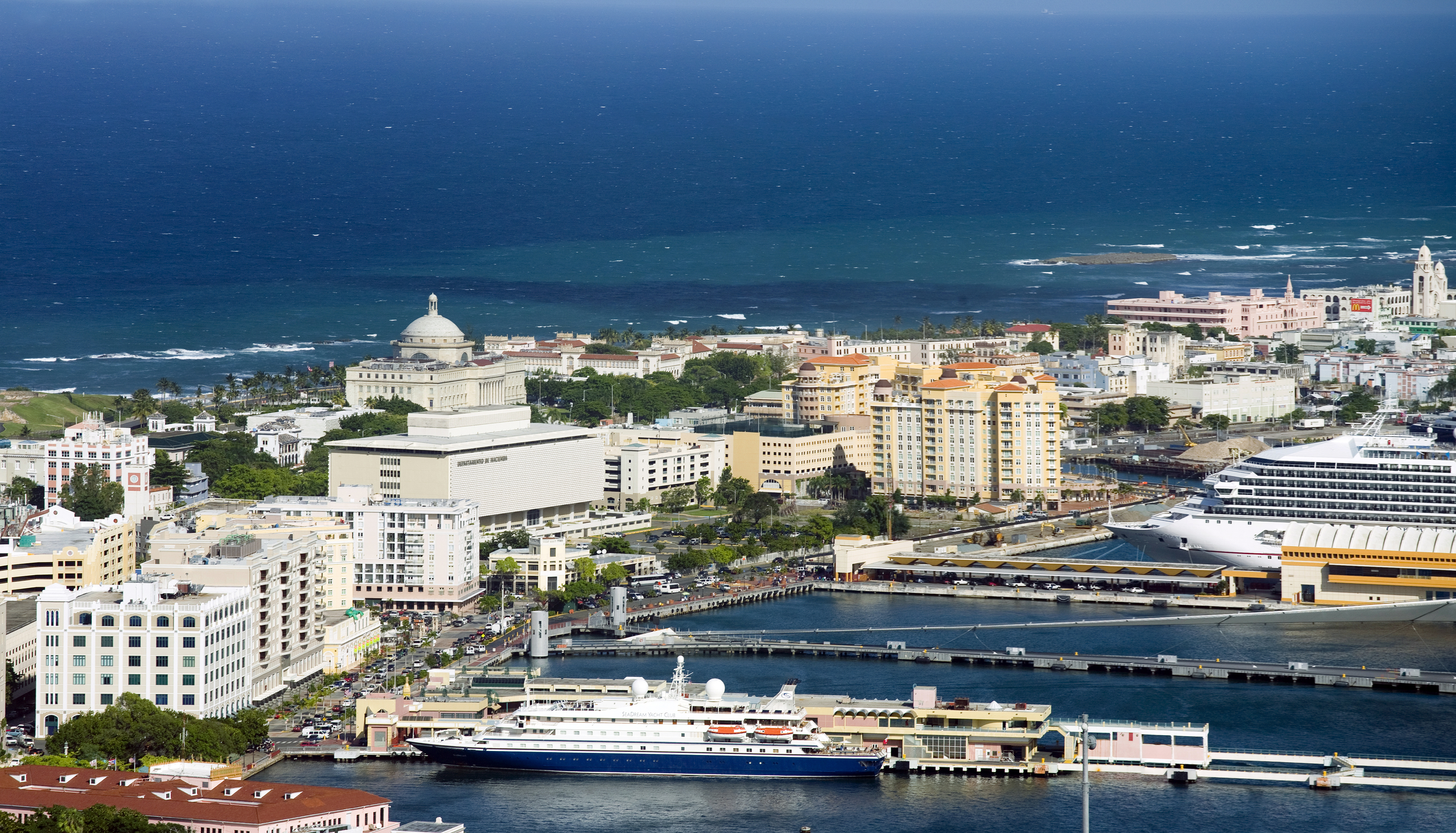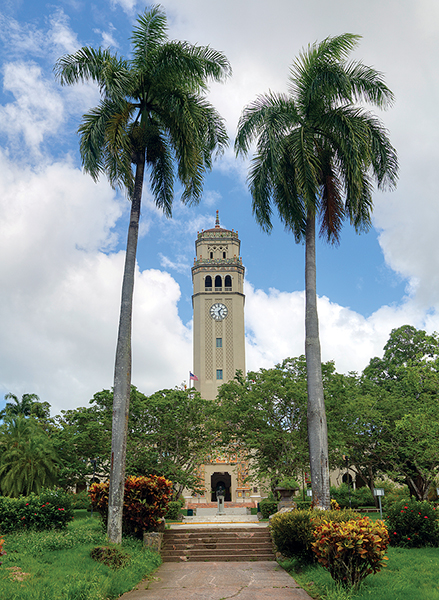San Juan << san HWAHN >> (pop. 322,854) is the capital and largest city of Puerto Rico. It is also the island’s chief seaport. The San Juan-Bayamón-Caguas metropolitan area has 2,081,265 people. The older part of the city lies on an island off the northern coast of Puerto Rico. Newer residential districts lie on the main island. Four bridges and a highway over the water link these sections. A commuter railway known as the Tren Urbano (Urban Train) connects San Juan to a number of suburbs. Trade, manufacturing, tourism, and government rank as the chief economic activities.

Some of the Spanish forts and the walls around the older part of the city are hundreds of years old. San Juan National Historic Site, covering 75 acres (30 hectares), contains many of these fortifications. El Castillo de San Felipe del Morro (commonly called El Morro), a fort built between 1539 and 1787, lies on a bluff at the entrance to the Bay of San Juan, which is one of the best harbors in the Caribbean Sea. The Palace of Santa Catalina, also called La Fortaleza, serves as the official residence of Puerto Rico’s governors. It was built in the 1530’s as a fort.

San Juan houses the Center for Advanced Studies on Puerto Rico and the Caribbean and the main campus of the University of Puerto Rico. Nearby Santurce is the home of the University of the Sacred Heart and the Conservatory of Music of Puerto Rico. San Juan’s major museums include the Museum of the Americas in the old town and the Museum of Art of Puerto Rico in Santurce.

In 1521, followers of Juan Ponce de León, a Spanish explorer and Puerto Rico’s first colonial governor, founded San Juan. It served as the seat of the Spanish provincial government.
